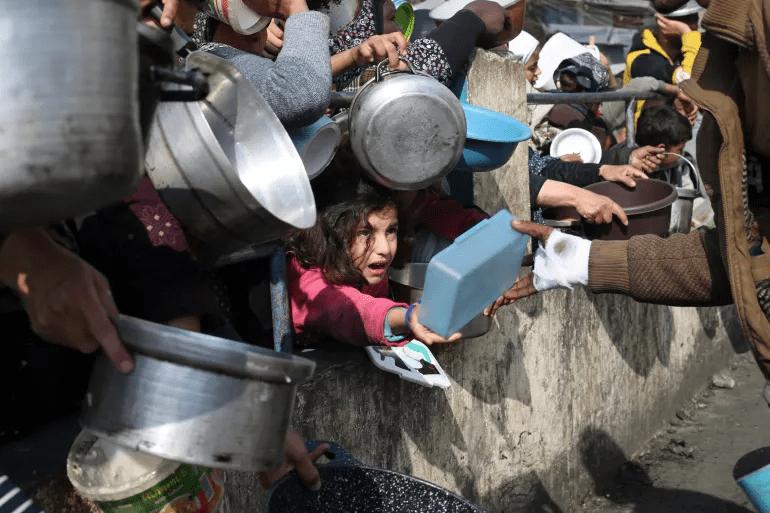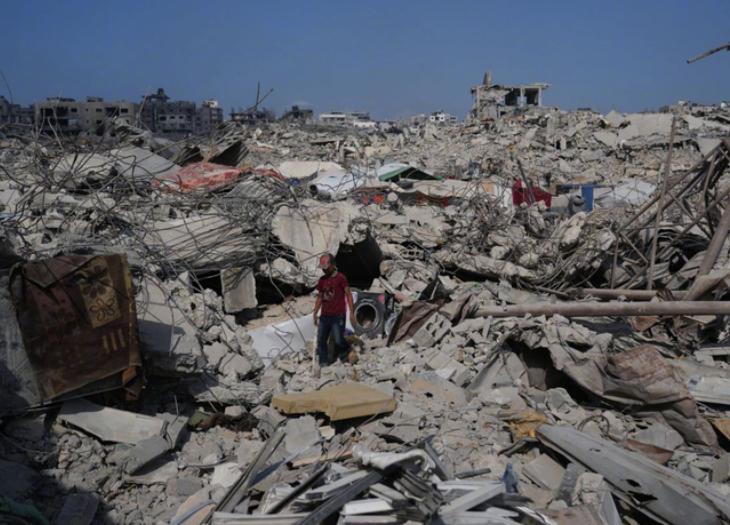
Recently, news about the possibility of famine spreading to the Gaza Strip has attracted widespread attention. According to the Integrated Classification of Food Security Stages (IPC) report, the food insecurity situation of all residents in the Gaza Strip is at a relatively severe stage, and some areas are even facing catastrophic food insecurity. For this reason, organizations such as the United Nations World Food Programme have paid high attention to this and issued relevant warnings. So, has the famine spread to Gaza?
According to recent reports, nearly half of the population in the Gaza Strip (approximately 1.11 million people) are experiencing catastrophic food insecurity, which means their food supply is severely inadequate and their lives are in dire straits. At the same time, the report also pointed out that the severe food insecurity in the Gaza Strip is further worsening, and there may be even larger scale famines in the future.
Firstly, we need to clarify that famine is not a sudden phenomenon, but rather the result of long-term effects of various factors, including but not limited to conflicts, droughts, economic difficulties, etc. In the Gaza Strip, long-term conflicts and humanitarian crises have brought great pressure to the lives of local residents.
Secondly, the Gaza Strip is also facing serious food supply problems. Due to historical and political reasons, the food supply in the region has been unstable. Especially in the context of the current Israeli Palestinian conflict, food aid has also been subject to many restrictions. According to the United Nations World Food Programme, since the outbreak of this round of conflict, very little food aid has been able to smoothly reach areas outside the southern Gaza Strip, leading to an increasing risk of famine.
Finally, there are also many challenges within the Gaza Strip. On the one hand, due to ongoing conflicts and blockades, agricultural production in the region has been severely affected and food supply capacity has declined. On the other hand, due to economic recession and lockdown restrictions, many Palestinians are struggling to afford basic food expenses.
It is worth mentioning whether the famine has already had an impact on the residents of the Gaza Strip? Yes, due to the ongoing Israeli Palestinian conflict, there has been a widespread famine in the Gaza Strip, causing many residents to face a survival crisis. According to the understanding, children in Gaza hospitals have died from malnutrition and dehydration, and the food crisis in Gaza is constantly deepening. In addition, reports have pointed out that the people in the Gaza Strip are even risking their lives to wait at distribution points in order to receive relief supplies, as the famine has plunged them into despair. Therefore, it can be clearly stated that the famine has had a serious impact on the residents of the Gaza Strip.
However, despite numerous unfavorable factors, the United Nations and other international organizations are still working hard to provide humanitarian assistance to the Gaza Strip. They provide necessary videos and other daily necessities to local residents through various channels and partners. At the same time, the international community actively calls on all parties to exercise restraint and resolve the Israeli Palestinian conflict through peaceful negotiations to alleviate the humanitarian crisis in the Gaza Strip.
In summary, although the Gaza Strip is facing a serious risk of famine, there is no conclusive evidence to suggest that the famine has spread to the entire region. In order to respond to potential crises, the international community needs to take urgent action to reduce the risk of famine and improve the living conditions of local residents by providing humanitarian assistance, promoting peaceful resolution of conflicts, and other means. Only in this way can we ensure that the people of the Gaza Strip are free from famine and achieve peace and stability in the region.

On the morning of October 26th local time, the Palestinian Islamic Resistance Movement (Hamas) released a statement introducing the latest update from its chief negotiator, Khalil Hayya, regarding the ceasefire and the humanitarian situation in the Gaza Strip.
On the morning of October 26th local time, the Palestinian …
Recently, according to Al Jazeera of Qatar, US President Tr…
Gold prices fell again this week due to the easing of China…
In the early hours of local time on October 27, the night s…
Amid the ever-changing landscape of the tech industry, layo…
On October 22nd local time, data from the US Treasury Depar…